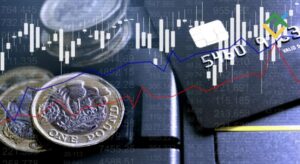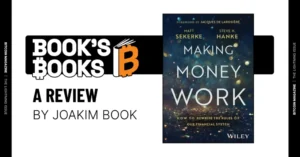Gold price erases selling pressure as safe-haven role for stagflation risk sticks

- Gold price briefly fell below the $3,000 mark in early Monday trading.
- Markets still favor Bullion as the safer bet for a stagflation scenario in the US.
- Gold tries to recover back to its opening price near $3,040.
Gold price (XAU/USD) recovers and trades near $3,040 at the time of writing on Monday after falling 2% intraday in early trading as the trade war spirals out of control. Bullion was able to show resilience and pared back earlier selling pressure with Stocks, the US Dollar (USD) and yields all dropping lower on Monday. With China issuing its own retaliatory tariffs against the United States (US), markets are holding their breath for any further response from other countries.
Meanwhile, investors will shift their focus to the US inflation data this week. Slowly but surely, the focus will now shift to the US economic data, which will bear its mark from the Donald Trump presidency. Markets will want to assess the impact of US President Donald Trump politics and how much it weighs on the US economic data. This Monday, traders are even pricing in five interest rate cuts from the Federal Reserve (Fed) this year.
Daily digest market movers: PBoC buying frenzy
- American billionaire hedge fund manager and chief executive officer of Pershing Square Capital Management William Albert Ackman asked President Trump on X to pause the current trade tariffs in order to first broker a trade deal. Ackman warns that Trump is losing business leaders’ confidence, Reuters reports.
- The CME FedWatch tool shows chances for an interest rate cut by the Fed in May standing at 49.3%, shooting up from 33.3% on Friday as rate cut bets grow. For June, a rates remaining steady scenario is out of the options. Only rate cuts are being penciled in with a 53.5% chance of policy rate being cut to the 3.75%-4.00% range from the current 4.25%-4.50%.
- China’s central bank, the People’s Bank of China (PBOC), added Gold to its reserves for a fifth straight month in March, deepening its bet on the precious metal as a haven asset amid rising global trade and geopolitical turmoil. Gold held by the PBOC rose by 0.09 million troy ounces last month, according to data released on Monday. The central bank’s recent run of buying started in November, after a six-month hiatus that followed an 18-month buying spree, Bloomberg reports.
Gold Price Technical Analysis: Firm interest in buying
Bullion is trying to contain the situation with the global market rout really spreading out. Certainly, many Bullion bulls will have bought any offer below $3,000, which is why Gold quickly recovered back above $3,000 intraday. Look for the nearby double resistance around $3,060 that could limit the Gold price briefly.
Looking up, a double resistance sits around the $3,060 area, with $3,057 as a technical level and the Daily Pivot at $3,063. Should that level be broken down, the road is open for the intraday R1 resistance at $3,111. Further up, the current all-time high can be seen as the last upside level for now at $3,167.
On the downside, the pivotal level at $3,004 and the S1 support at $2,990 have been torn down briefly. Clearly, many buyers were interested in scooping up Gold at these levels. Should Gold fall back below $3,000, the pivotal level at $2,955 and the S2 support at $2,942 should be able to refrain Gold from falling below $2,940.

XAU/USD: Daily Chart
US-China Trade War FAQs
Generally speaking, a trade war is an economic conflict between two or more countries due to extreme protectionism on one end. It implies the creation of trade barriers, such as tariffs, which result in counter-barriers, escalating import costs, and hence the cost of living.
An economic conflict between the United States (US) and China began early in 2018, when President Donald Trump set trade barriers on China, claiming unfair commercial practices and intellectual property theft from the Asian giant. China took retaliatory action, imposing tariffs on multiple US goods, such as automobiles and soybeans. Tensions escalated until the two countries signed the US-China Phase One trade deal in January 2020. The agreement required structural reforms and other changes to China’s economic and trade regime and pretended to restore stability and trust between the two nations. However, the Coronavirus pandemic took the focus out of the conflict. Yet, it is worth mentioning that President Joe Biden, who took office after Trump, kept tariffs in place and even added some additional levies.
The return of Donald Trump to the White House as the 47th US President has sparked a fresh wave of tensions between the two countries. During the 2024 election campaign, Trump pledged to impose 60% tariffs on China once he returned to office, which he did on January 20, 2025. With Trump back, the US-China trade war is meant to resume where it was left, with tit-for-tat policies affecting the global economic landscape amid disruptions in global supply chains, resulting in a reduction in spending, particularly investment, and directly feeding into the Consumer Price Index inflation.





